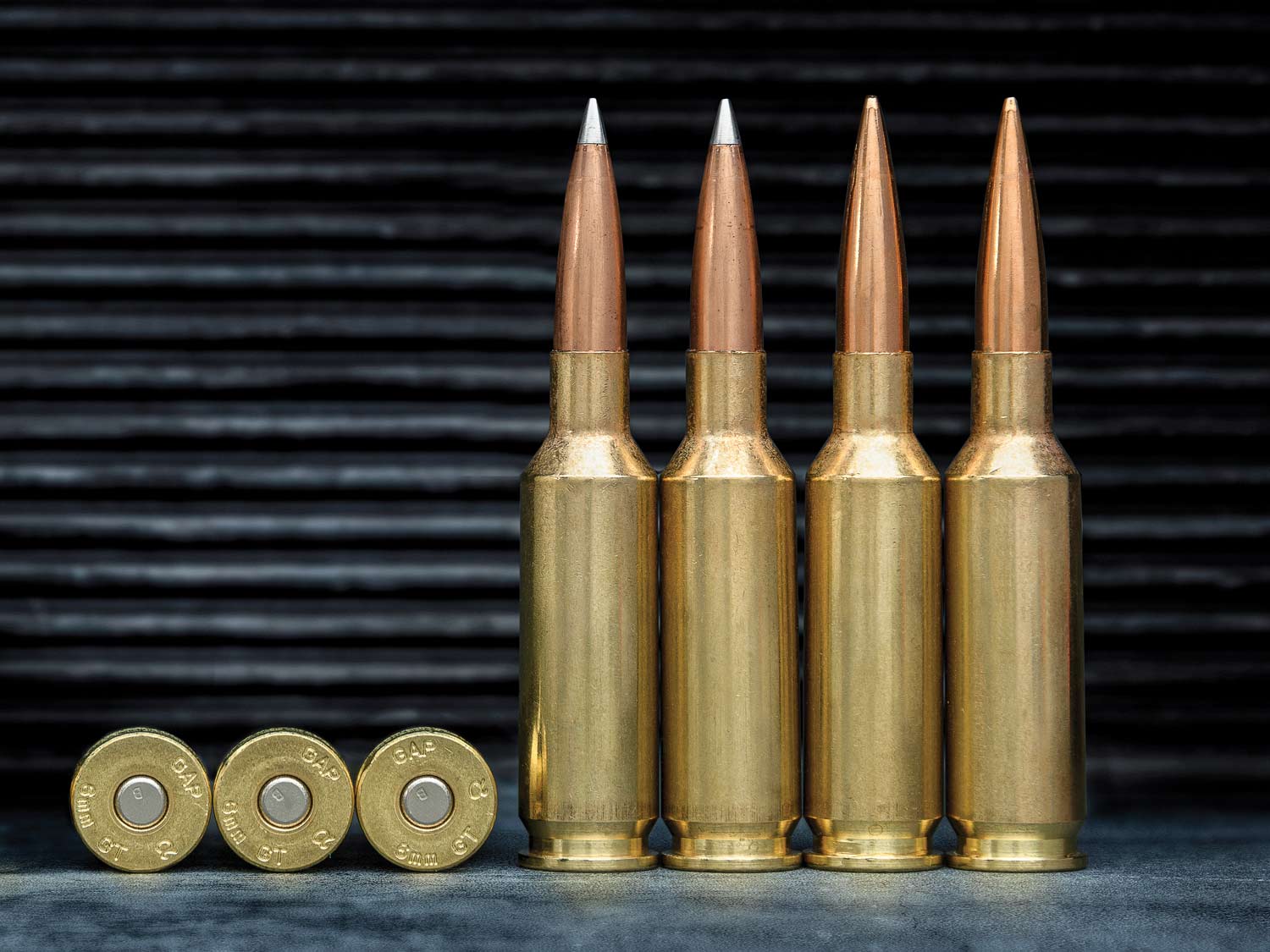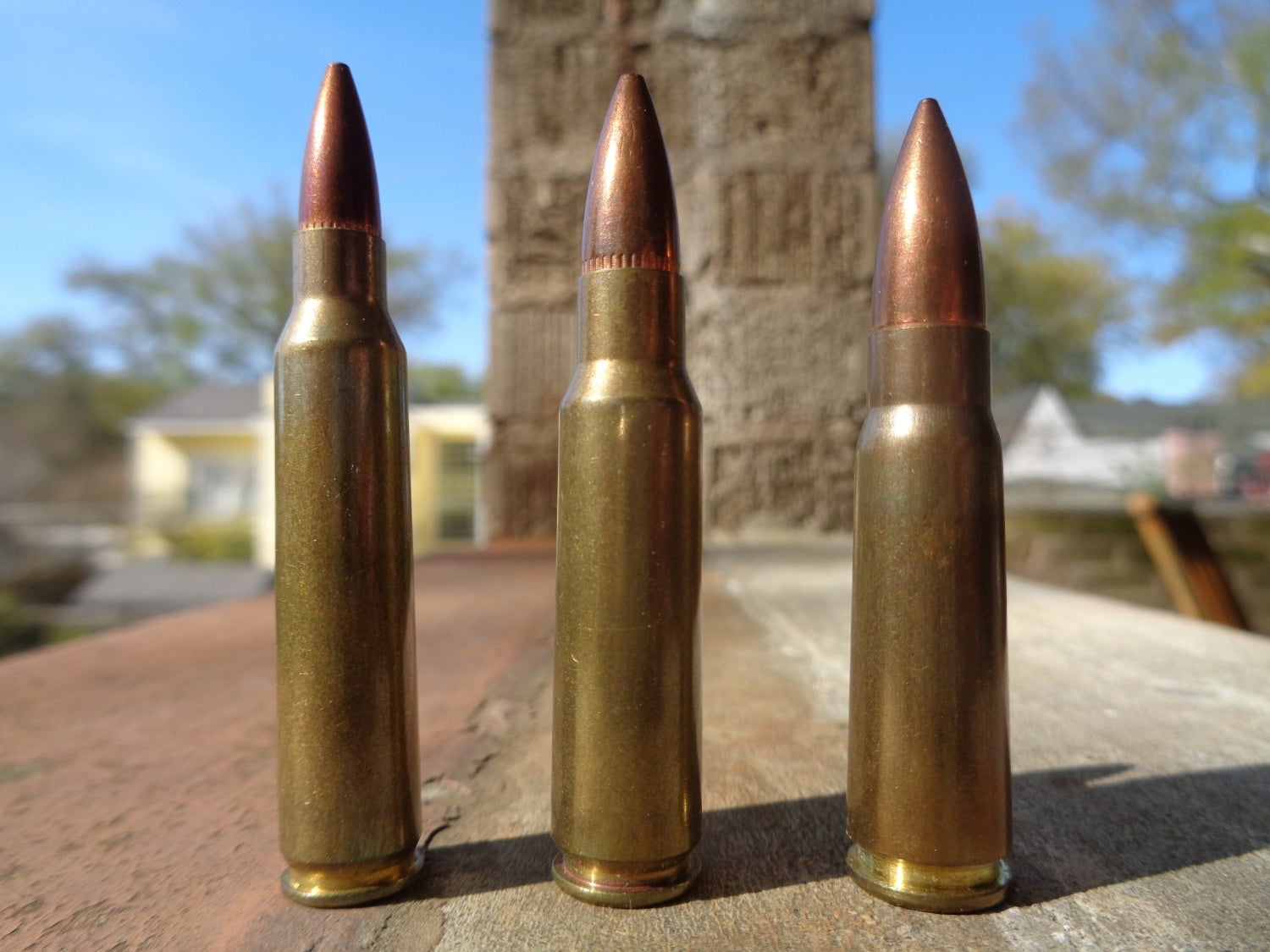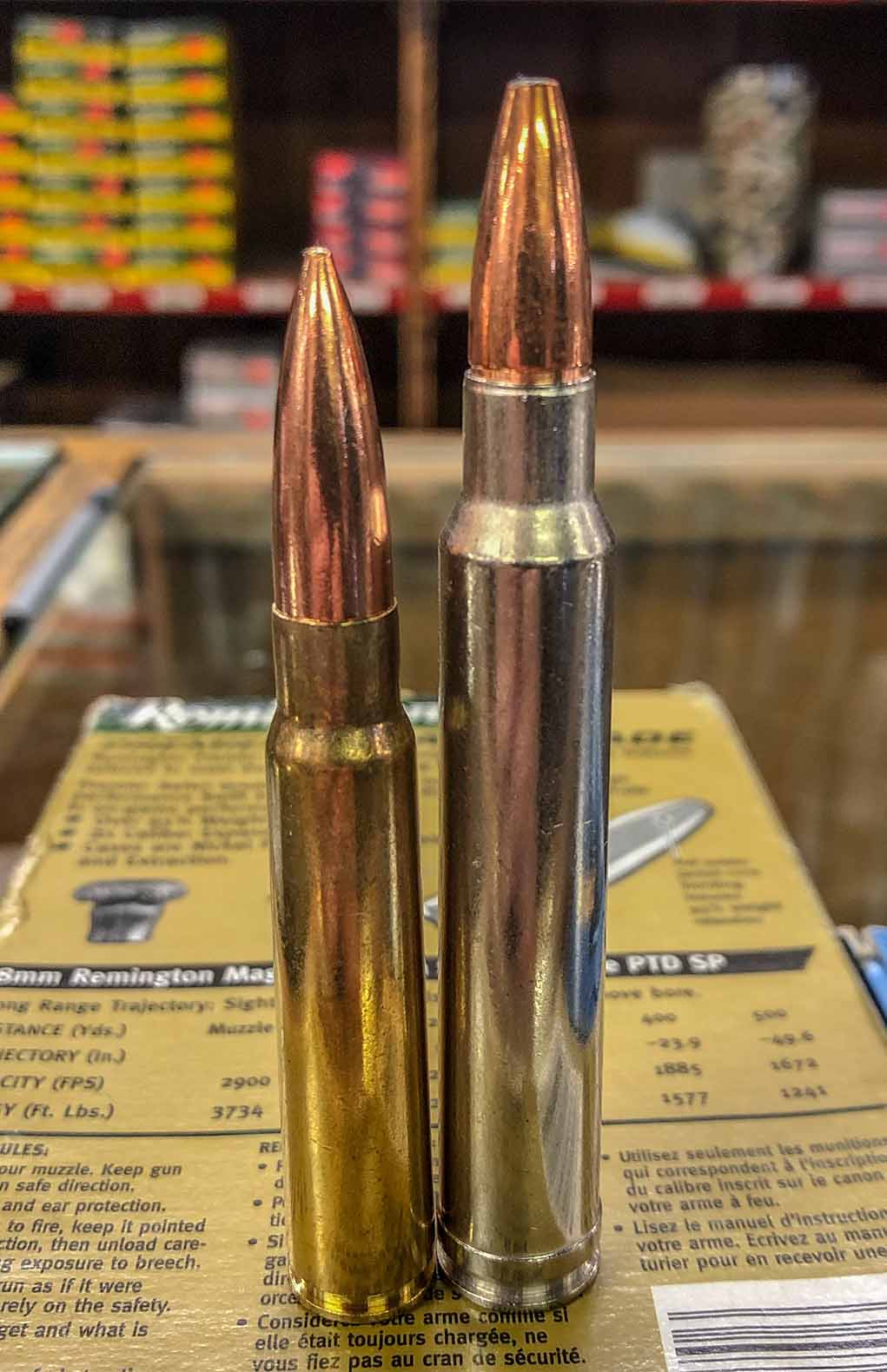6.8 Mm Cartridge - The 6.8mm Remington Special Purpose Cartridge (6.8 SPC, 6.8 SPC II or 6.8×43mm) is a rimless medium rifle cartridge developed by Remington Arms in collaboration with members of the US Army Marksmanship Unit and the United States Special Operations Command.
Possibly replace the 5.56 NATO cartridge in short-barreled rifles (SBRs) and carbines. Based on the .30 Remington cartridge,
6.8 Mm Cartridge

It lies between the bore diameters of 5.56×45mm NATO and 7.62×51mm NATO. It uses the same bullet diameter (usually not the same weight) as the .270 Winchester hunting cartridge.
Mm Creedmoor 144gr Long Range Hybrid Target Rifle Ammunition
The 6.8mm SPC cartridge was designed to compensate for the terminal ballistic deficiencies of the 5.56×45mm NATO cartridge currently in service with the armed forces of all NATO-affiliated nations.
The cartridge was the result of an advanced cartridge program for the rifle. The 6.8 SPC (6.8×43mm) was originally developed by Sergeant Steve Holland and Chris Murray, a rifleman in the United States Army.
The M16 pattern provides superior downrange lethality with minimal loss of magazine capacity and negligible increase in recoil compared to the 5.56 NATO/.223 Remington in service rifles.
The program began the design using a .30 Remington case, modified to fit magazines that would fit the magazines of the M16 family of rifles and carbines currently in service with the US Armed Forces.
The Two German Sisters — Ron Spomer Outdoors
In tests comparing bullets of different calibers using Remington .30 part cases, Holland and Murray found that the 6.5 mm projectile had the best accuracy and traction, historical data spanning decades of US military external and terminal ballistics testing, but the 7 mm projectile had the best final performance. was The combination of cartridge case, powder charge and projectile easily outperformed the Soviet 7.62×39mm and 5.45×39mm cartridges, with the muzzle velocity of the new cartridge proving to be about 61 m/s (200 ft/s) faster than the 7.62 x. 39.
The 6.8mm Remington SPC was designed to perform better in short-barreled CQB rifles after being downgraded from 5.56 NATO when the M16A4 was converted from a rifle to the current M4 carbine. The 6.8 SPC delivers 44% more power than the 5.56mm NATO (M4 configuration) at 100-300 m (330-980 ft). The 6.8mm SPC is not the ballistic equivalent of the 7.62×51mm NATO round, but it has less recoil, is said to be more controllable for rapid fire, and is lighter, allowing operators to carry more ammunition than would otherwise be possible with a larger caliber charge. The 6.8mm puts out about 2,385 J (1,759 ft⋅ lbf) of muzzle energy with a 7.5-gram (115 g) bullet. By comparison, the 5.56×45 mm cartridge (which is intended to replace the 6.8 cartridge) produces about 1,796 J (1,325 ft⋅lbf) with a 4.0 g (62 gr) bullet, giving the 6.8 mm the ultimate advantage of 585 585 mm. J (434 ft⋅lbf). A distinctive feature of this cartridge is that it is designed for a carbine rifle with a shorter barrel length than a standard rifle (typically 41 cm (16 in)). The bullet gains only 7.6–10.7 m/s (25–35 ft/s) for every 25 mm of barrel length. inches) without any gain or loss of accuracy. It also performs well on rifles with barrels shorter than 410 mm (16 in). In direct development (period 2008–2012), the performance of the 6.8 SPC increased from about 61 to 91 m/s (200 to 300 ft/s) thanks to the work of ammunition manufacturer Silver State Armory LLC (SSA) and several custom rifle manufacturers. One suggestion is using the correct chamber and barrel specifications. The 6.8mm Remington SPC cartridge weighs between 16.8 and 17.6 grams (259 and 272 grams) depending on manufacturer and load. More specifically, LWRC, Magpul and Alliant Techsystems (ATK) introduced a new AR-15 designed for the 6.8 SPC, which allows for custom 6.8 Magpul P-mags and an overall cartridge length of 5.9 cm (2.32 inches). . The Personal Defense Weapon (PDW) is an SPC II known as the "Six8" that has a 1:250 mm (10 in) twist and is capable of using all common factory 6.8 SPC ammunition.
Typical trajectory data from the carbine including drop and velocity are calculated with zero at 91 m (100 yd) at sea level.

Additional references are required to verify this section. Please help improve this article by adding citations to reliable sources. Non-source material may be challenged and removed. Find source: "6.8mm Remington SPC" - News · Newspaper · Book · Scholar · JSTOR (August 2021) (Learn how and how to remove this report template)
Is The 8.6 Blackout A 338 Federal With Better Marketing?
As of late 2004, the 6.8×43mm SPC is said to perform well in the field against emy fighters in special operations.
However, the cartridge was not used by regular US military personnel. It was not adopted for widespread use due to opposition from officials.
The 6.8 SPC was designed for good terminal performance at short ranges in urban warfare found in Iraq. As the war in Afghanistan began to intensify, gauges began to occur at longer distances, where the 6.8 SPC began to falter. Tests indicated that the relatively small 6.8mm bullets became ineffective at longer ranges.
In 2007, US SOCOM and the US Marine Corps decided not to issue weapons chambered in 6.8 mm due to logistical and cost concerns.
File:big Caliber Cartridge Comparison Withdata.jpg
Although there have been many rumors of the cartridge being evaluated by several major federal and local law enforcement agencies, the US Drug Enforcement Administration has allowed individual agents to purchase the M6A2 D-DEA—which uses the 6.8mm Remington SPC as an approved alternative. Their service weapon.. In 2010, Jordanian state arms manufacturer KADDB announced that it would produce 6.8mm rifles and carbines for the Jordanian military.
There is also a contract between LWRC, Magpul, Alliant Techsystems and the Saudi Royal Guard for about 36,000 Six8 PDW and an undisclosed amount of ATK/Federal XD68GD (90gr Gold Dot "training" ammo) and proprietary Pmagpuls 6. LWRC Six8.
The first major manufacturer to offer a 6.8mm version of the Remington SPC chambered AR-15 was Barrett Firearms Company, which offered the Barrett M468 and later the REC7. By 2007, most major manufacturers of AR-15 rifles offered rifles in this caliber for the civilian firearms market. Dedicated AR upper receiver assemblies with a cartridge chamber are manufactured by several smaller companies, including Daniel Diffs. Ruger Firearms no longer makes the 6.8mm for the piston-operated version of the Ruger SR-556 AR-15.

Stag Arms Hunter and Tactical models use a new chamber (SPC II) and specific twist rate to accommodate higher pressure loads as well as upper receivers in left-handed configurations. Rock River Arms has a LAR-6.8 X Series rifle and uppers. Microtech Small Arms Research offers versions of the Steyr AUG in 6.8. Robinson Armat Co. offers the XCR-L in 6.8, which is easily convertible between 6.8, 5.56 and 7.62×39. Bushmaster released the 6.8 SPC II conversion kit in October 2018. Ruger Firearms has stocked their Mini-14 ranch rifles in this round for several years; However, its production was discontinued. SIG Ammunition has manufactured and delivered more than 825,000 rounds of 6.8x51mm composite case ammunition for prototype test numbers in the Army's Next Generation Weapons Platoon Program. 2
Western Vs 6.5 Creedmoor: Cartridge Comparison
Last month, SIG Ammunition delivered 825,000 rounds of its 6.8x51mm composite ammunition to the US Army for prototype testing. 2 as part of the new generation squad weapons program. This is in addition to previous deliveries under the program as well as munitions used for internal development and testing. All told, I estimate they are close to a million rounds of new generation hybrid ammo.
The NGSW program will replace the 5.56mm M4 carbine and M249 automatic weapons with a new rifle and squad-level automatic rifle in close combat formations such as infantry and mounted scouts. Other services are also monitoring the program to decide if they want to participate.
In addition to the aforementioned ammunition, NGSW-AR light machine guns and NGSW-R rifles, suppressors are also in the program. Additionally, they are working with a team of other suppliers on a specialized fire control system.
At the heart of this program is ammunition. The military gave the industry a 6.8 mm projectile and a performance specification, but left it up to them how to deliver that projectile within the required performance parameters.
Sellier & Bellot 6.8mm Spc 110gr Plastic Point Ammunition 20rds
The performance they are looking for is similar to the 270 Win short mag. The velocities required for this 6.8 mm projectile to achieve the desired effects on target require high chamber pressures of over 80,000 psi; Handguns were unheard of before.
As if it weren't enough that the ammunition is of a larger caliber than what it replaces, it must be at least 20% lighter. SIG's hybrid ammunition design exceeds this goal and is 23.5% lighter than an equivalent energy cartridge weight (270 WSM). Below you can see the hybrid case next to the conventional brass ammo.
This is not a science project. The Army plans to choose a solution within the next year. While the engineering itself is formidable, the industry must be able to produce realistically engineered munitions and weapons, if they are chosen.

The necessity led to some interesting solutions. from
Big Game Cartridge Battle: The 6.5x55 Vs. 6.5 Creedmoor
Making poll, poll page, civiqs, employee poll, poll biden, swiming poll, brass poll, poll decks, newsmax poll, poll apps, camera poll, bias
0 Comments